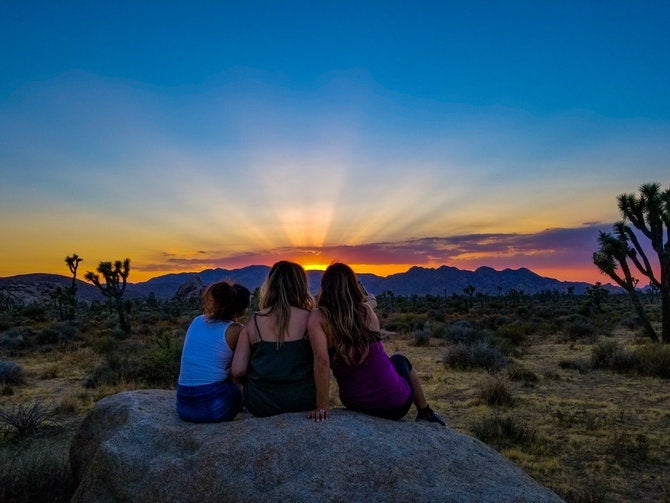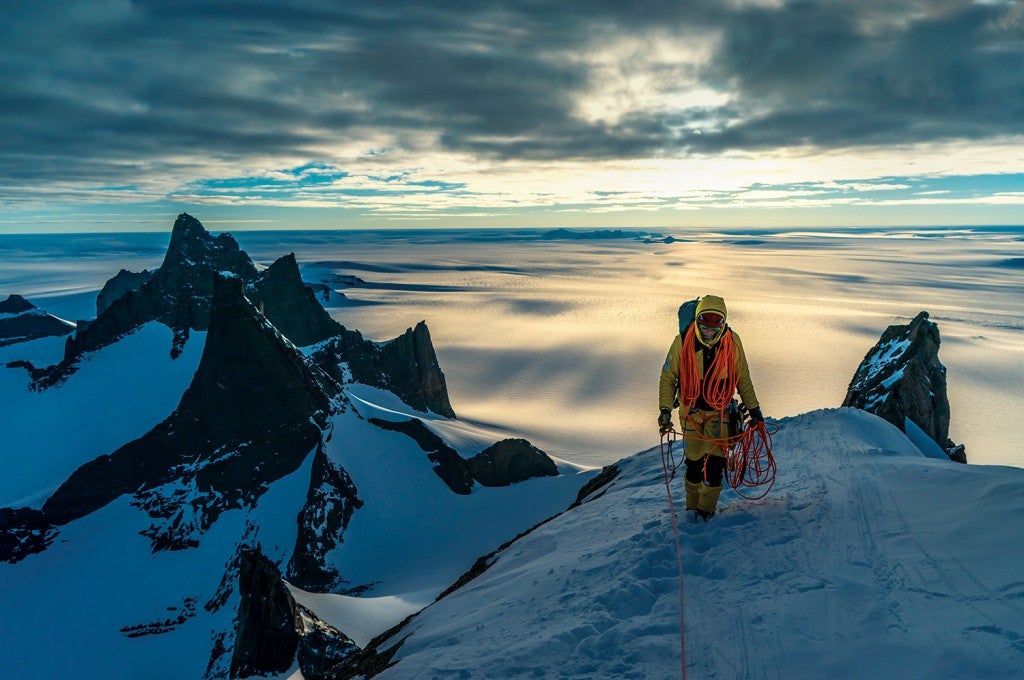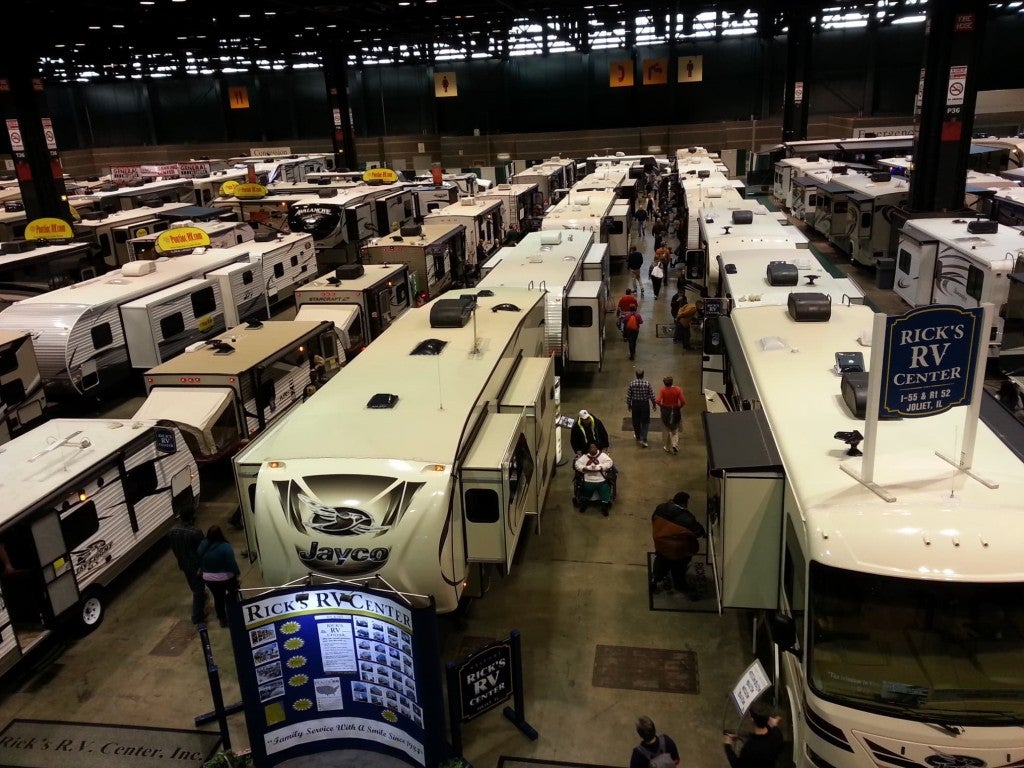A visit to California deserts, or any desert anywhere, is a humbling experience. The colors, the heat, the stillness of the air and the lack of vegetation all make the desert an achingly lonely environment that is both familiar and alien. Mountains appear from nowhere, rising before you in bands of shimmering, muted shades, appearing as if they’re pixelated or imagined; a mirage. California deserts are extreme in climate and unparalleled in their beauty.
The state’s southeastern region is thought of as one expansive desert area, although technically it is formed of three separate, defined deserts: The Mojave, The Colorado, and The Great Basin.
A Camper’s Guide to The Three Main California Deserts
Deserts in California can be a dream spot for outdoors enthusiasts, so naturally campers from across the country flock to these areas for an all-activity camping adventure. For the most comfortable camping, however, the best time to visit the desert is in late fall or early spring. In early spring, it’s possible to view the wildflowers that blanket the desert floor in a vibrant rainbow of color.
For campers visiting California deserts in the winter, the weather can be surprisingly cold and windy, so come prepared. Lower elevation campgrounds will be warmer, but a warm sleeping bag and three-season tent is still appropriate. Daytime temperatures can and do still rise into the 80s, so bring layers, plenty of water, and protection from the sun.
Where to Camp in the Mojave Desert
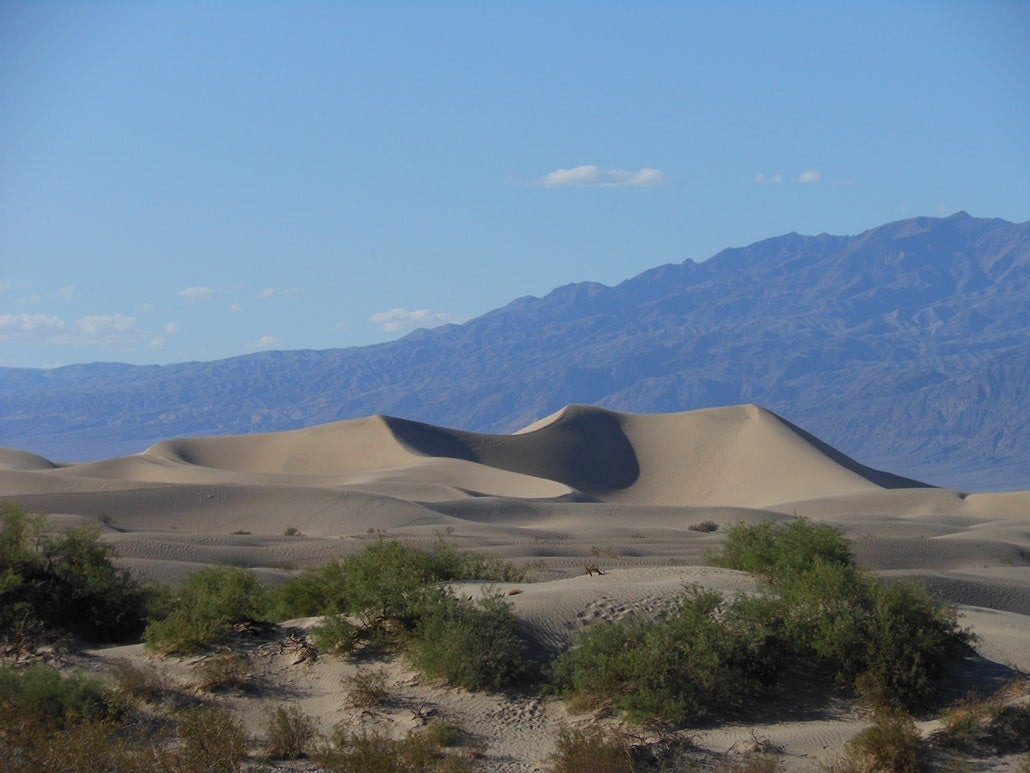
Image from The Dyrt camper Amanda D.
The Mojave Desert is more than 25,000 square miles, the majority of it lies in eastern California. Its climate is known for extreme variations; while blisteringly hot in the summer, the winter months can bring a chill that allows for frequent frosts. Still, the Mojave is the driest desert in North America. The Mojave Desert is the only place in the world to see Joshua trees, which grow abundantly in the southern region. Typically referred to as the “high” desert for its placement above the Sonoran desert to the south, the Mojave also has the lowest point of elevation in North America, Badwater Basin.
Visitors flock to the Mojave to visit Death Valley National Park, Joshua Tree National Park, and the Mojave National Preserve, the region’s three major activity and camping areas. Popular activities in the Mojave Desert include camping, hiking, sand dune activities, and hot spring soaking.
Death Valley National Park
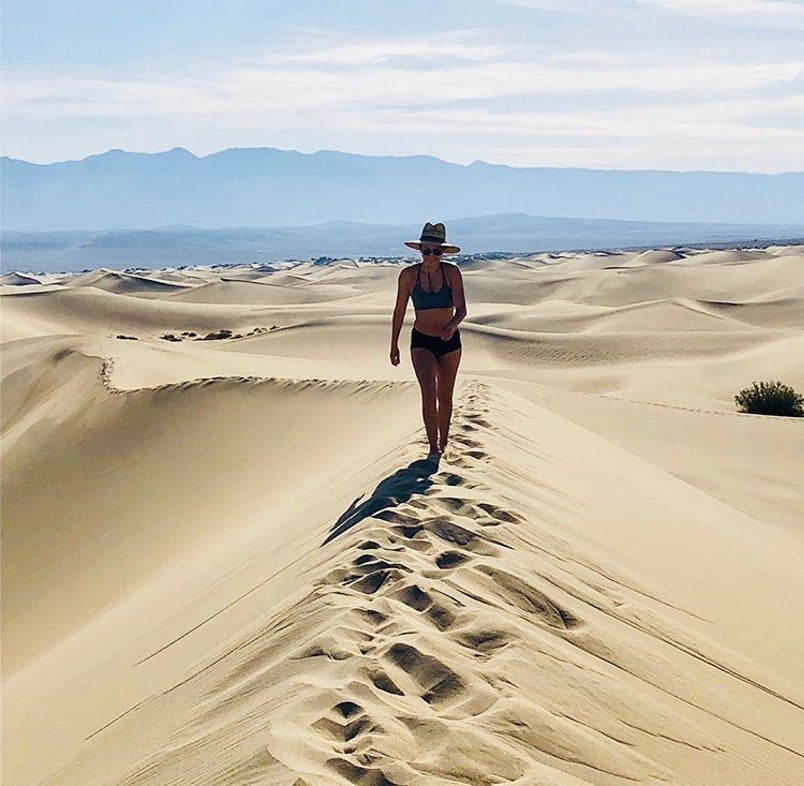
Image from The Dyrt camper Alex B.
Death Valley is a stunning 5,262-square-mile national park, the largest in the lower 48. It lies in two of the three California deserts—the Mojave and the Colorado–and has countless day hikes, badlands, hot springs, and of course, incredible views.
There are multiple options for camping and lodging within Death Valley National Park. If you’d prefer a resort stay, you can book a room at the centrally-located resort The Oasis, or stop over at nearby Stovepipe Wells, where you can stay in the inn. Or, if you’re really wanting to escape into the wild of the desert, there are a number of backcountry, primitive camping spots. These three campgrounds are popular campgrounds for an amazing tent camping stay.
Furnace Creek
Centrally located in Death Valley, this is perhaps the most popular campground in the National Park. Close to the abandoned borax mine, Furnace Creek has a visitors center, hiking trails, drinking water, and flush toilets. This is the only campground in Death Valley that takes reservations, and it books quickly over winter and spring holiday weekends.
Furnace Creek has 136 campsites; some sites are basic tent sites, others offer hookups for RV campers. There is a dump station. Prices range from $16 dollars to $60 dollars per night.
Wildrose Campground
Wildrose is a free campground in Death Valley National Park that is open to campers and visitors year-round. For those coming during the warmer months, Wildrose campground has an elevation of 4,100 feet, meaning you’ll get a colder and more comfortable night’s rest, as the temperature will drop significantly from the daytime heat. It has water and vault toilets, and is limited to vehicles under 25 feet.
For those looking to avoid the crowds, Wildrose is a solid option. The Dyrt camper Britany R. enjoyed their stay at Wildrose for its proximity to hiking trails. “Wildrose campground is removed from the more crowded spots, and it’s free! If you’re looking to hike Wildrose Peak or Telescope Peak, this campground puts near the base of both. It’s quiet and a little cooler than most of the park.”
Wildrose Campground is a first-come, first-serve free campground that offers a more primitive camping option for those looking to escape the popular Furnace Creek area. There are 23 sites.
Mesquite Spring
First-come, first-serve campground Mesquite Spring is a popular Death Valley campground, offering access to the best of the park. The Dyrt camper Katie O. enjoyed their stay at this campground because of the fact that it is close to, well, everything. “Mesquite spring campground is a great location in middle of everything. there is so much to do and see in death valley so it’s nice to be centrally located.”
Mesquite Spring has 30 sites that are open year-round. There is water, a dump station, and flushing toilets, as well as a fire pit and picnic tables at each site. It costs $14/night to stay at Mesquite Spring.
Joshua Tree National Park
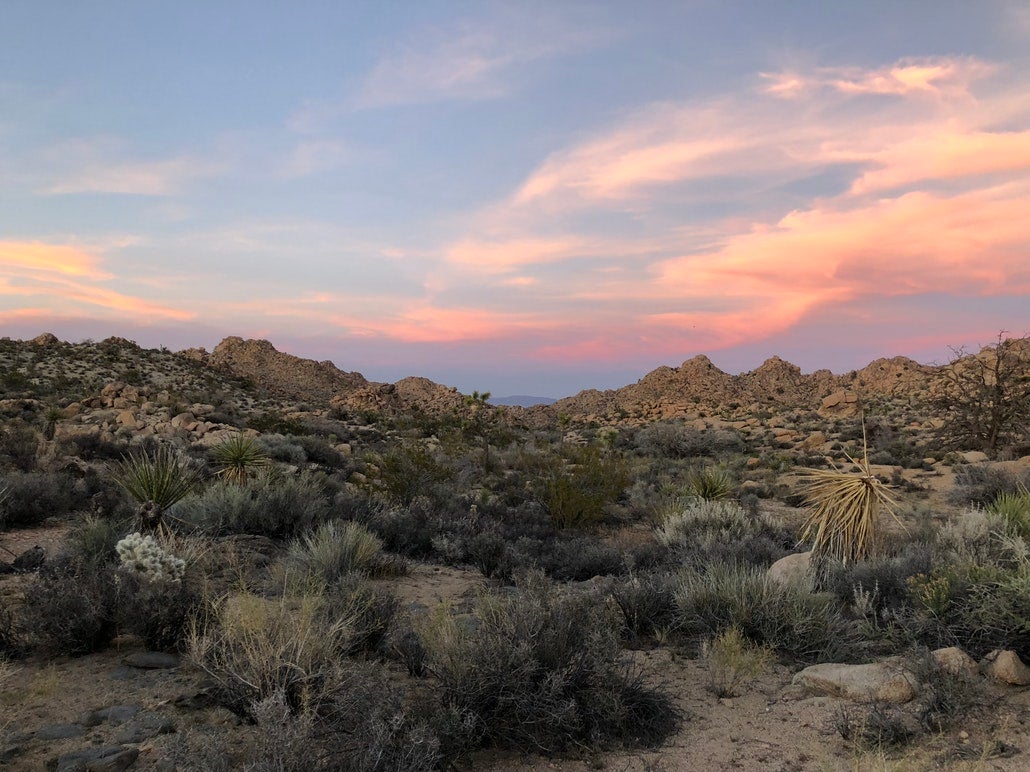
Image from The Dyrt camper Marion D.
Joshua Tree National Park is quickly rising in popularity for its world-class bouldering and rock climbing, other-worldly rock formations, and most notably its Dr. Seuss-like Joshua Trees. Its relatively smaller size makes it feel manageable for a short weekend trip. It’s not far from Los Angeles, and yet boasts some of the darkest night skies in southern California.
There are eight main campgrounds in Joshua Tree National Park, and all eight are first-come, first-serve. Below, we’ve searched countless reviews on The Dyrt to find our campers’ favorite California desert campgrounds in Joshua Tree National Park.
Jumbo Rocks Campground
Jumbo Rocks is an appropriately named campground—nestled amongst giant groupings of boulders are over 100 campsites with varying degrees of privacy. This is a very popular campground within Joshua Tree National Park, and fills early on the weekends.
Jumbo Rocks accepts reservations, and during the busy season—fall, winter, and spring—booking ahead is highly recommended. Summer weather brings stifling heat, and thus a lull in visitors to the park. At this time, Jumbo Rocks offers first-come, first-serve sites to all 124 of their sites. It costs $15/night to stay at Jumbo Rocks.
White Tank Campground
White Tank is a much smaller campground in the park, but still very popular. With excellent hiking nearby—Arch Rock Trail has a trailhead from the campground—and large boulders in and around the campground for bouldering and rock climbing, this campground is a solid adventure basecamp for any visitors to California’s deserts.
The Dyrt camper Andrew D. expressed his appreciation for the campground’s proximity, saying, “The best thing about this campgrounds is that Arch Rock trail is there for your sunrise and sunset needs. Scramble the boulders as well. The campground is is pretty much in the middle of the park, great proximity to the other features in the south, west and farther north.”
White Tank Campground has only 15 sites, so as stated above, it is a much smaller campground than Jumbo Rocks, but the fee is just $15.
Ryan Campground
Calling Joshua Tree a “gorgeous alien landscape,“ The Dyrt camper Kelly M. enjoyed her stay at Ryan Campground and has this advice for campers wanting to stay here: “You must bring all of your own water and firewood (not allowed to collect it there). It is an easy drive from Ryan campground to several classic hikes including Ryan Mountain Trail with an epic view like many deserts in California. Cholla garden is far, but so pretty at sunrise/sunset – just heads up that because it is on the eastern side of the hills in the park the sun sets significantly earlier than the rest of the park- so be sure to hit early!”
Ryan Campground has 31 sites, all of which are first-come, first-serve year-round. For horse-back riders, there are four designated equestrian sites which, consequently, do require reservations, although as stated there is no water so be sure to come fully prepared. It costs $15/night to stay at Ryan Campground.
The Mojave National Preserve
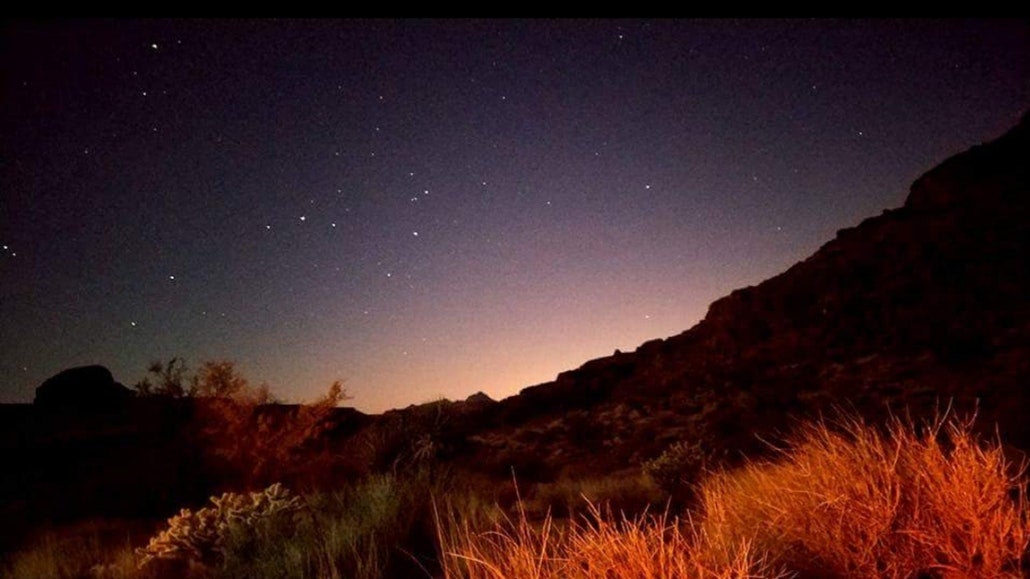
Image from The Dyrt camper Steven C.
The vast desert wasteland between Los Angeles and Las Vegas is home to the wild, desolate Mojave National Preserve. Featuring massive sand dunes, canyons, long-abandoned homesteads and mines, mountains, and mesas, this park holds an expansive and beautiful landscape that is unique to California deserts.
Hiking, sand dune recreation, and camping are popular in the Mojave National Preserve. There are two developed campgrounds, but be sure to come prepared; as with any desert visit, bring plenty of water for your stay.
Hole-in-the-Wall Campground
Hole-in-the-Wall campground sits smack dab in the middle of some pretty stellar Mojave Preserve hikes, so it is a popular basecamp for hikers. It is a campground surrounded by volcanic rock walls, which lends a feeling of being protected from the desert elements.
Both tent campers and RVers are welcome at Hole-in-the-Wall. Reservations are not accepted, as like many campgrounds in California deserts, this spot is first come, first serve. There are pit toilets and there is water. There is a $12/night fee for camping at Hole-in-the-Wall Campground.
Mid Hills Campground
Calling it “winter camping without the snow,” The Dyrt camper Peter A. enjoyed camping at Mid Hills regardless of the season. “Having camped here twice this year, it’s a favorite of mine. Temps are decent, even in January (mid-30s for lows) and perfect in April. Tree cover is still a bit sparse and hiking options are limited, but it’s a great place to set up camp and do absolutely nothing.”
Mid Hills campground features pit toilets, trash receptacles, and fire rings in each campsite. Each of the 26 sites are first-come, first-serve, and it costs $12/night to camp at Mid Hills.
The Best Mojave Desert Hikes
- Teutonia Peak. A 5,755 ft peak on the most symmetrical dome in the United States, you’ll gain 700 feet in elevation over a four-mile, round-trip hike. You’ll pass through the world’s densest Joshua Tree forest, an experience unique to hiking in California deserts.
- Ryan Mountain. This moderate Joshua Tree National Park hike rises over 1,000 feet to the 5,457 foot peak, rewarding hikers with 360 degree views of the desert floor stretching below.
- Telescope Peak. This 14-mile Death Valley hike is a difficult trail, but well worth it. Much of the hike offers unobstructed views of this truly breathtaking park. Telescope Peak is over 11,000 feet, and on a clear day, hikers can see to Mount Whitney, the highest point in the contiguous United States, as well as Badwater Basin, the lowest point in North America. The juxtaposition of that is pretty neat to witness.
Where to Camp in The Colorado Desert
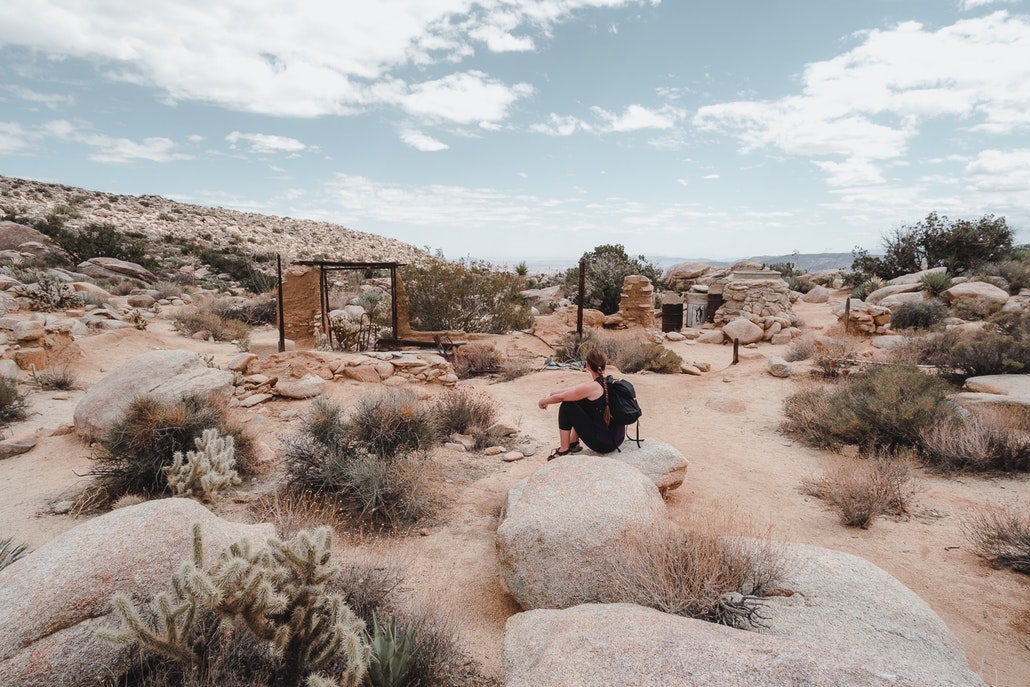
Image from The Dyrt campers Trip Over Life
While technically a part of the Sonoran Desert, the Colorado is a low-lying, arid desert that rests on the edge of California, Arizona and Nevada. Its climate distinguishes it from the other California deserts, however, as it experiences hotter summertime temperatures and almost no frost during its two wet seasons.
The Colorado Desert is one of the least populous regions of California, yet interestingly, it’s where you can clearly see the cause and effects of human activities. The heavily-irrigated Coachella and Imperial valleys appear as nothing near their natural state. It’s an incredible region to witness the often devastating effects humans have on the environment, while also being able to lay witness to the untouched expanse of Colorado Desert not included in the Coachella and Imperial valleys.
Anza-Borrego Desert State Park
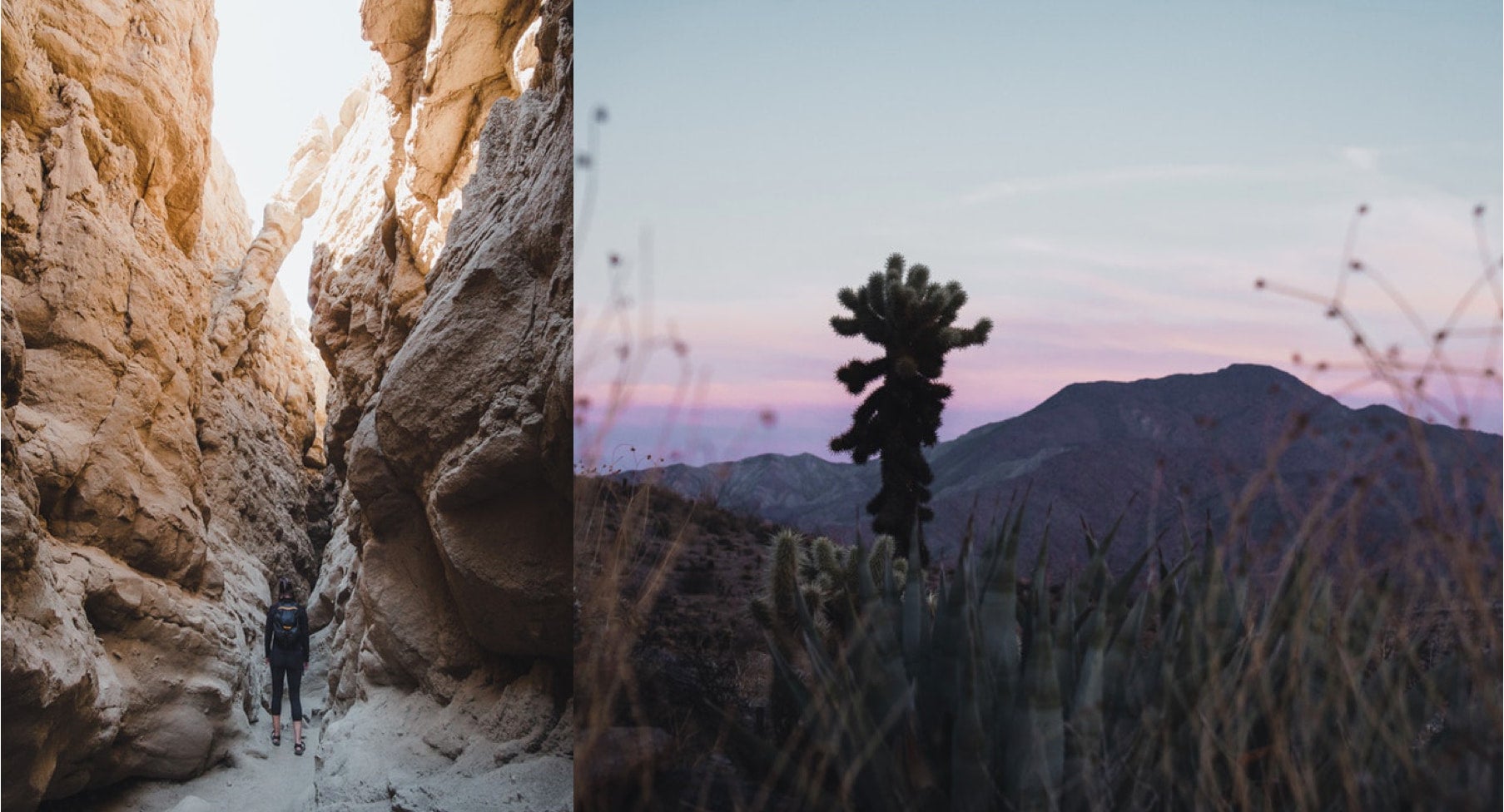
Image from The Dyrt campers Trip Over Life
California deserts are seemingly barren landscapes, but in reality are teaming with well-adapted flora and fauna. Anza-Borrego Desert State Park, California’s largest state park, is no exception. Mountain lions, bighorn sheep, foxes, roadrunners, and a diverse population of birds all call this spectacular 600,000 acre park home. It is known for its rugged landscape, canyons, and after the wet season, its show of wildflowers native to California deserts.
Located about two hours from San Diego, this is a popular park on the weekends. There are a number of hikes, chances for desert animal sightings, and even historical artifacts in the form of mammoth skeletons and fossils dating back 10-12 million years.
Tamarisk Grove
The Dyrt campers Trip Over Life enjoyed their stay at Tamarisk Grove for its location to area hikes, saying, “The campground is across the street from both the Cactus Loop and Yaqui Well trail heads. We recommend the short Cactus Loop hike over the Yaqui Well hike. Go at sunset to catch the cholla cacti backlit by the sunset.”
Tamarisk Grove offers flush toilets and coin showers, which, for those that are familiar with desert camping, is a welcome amenity. Each of the 27 sites are first come, first serve. It costs $25/night to camp at Tamarisk Grove.
Culp Valley Primitive Campground
Culp Valley Primitive Campground is a free, primitive and first-come, first-serve campground. About two hours northeast from San Diego and in the heart of the Colorado Desert, this campground is in a prime location for day hikes, close access to the Salton Sea, and is perfect for perhaps what California deserts are best known for: stargazing.
Word to the wise: this campground can be windy. The Dyrt camper Ryan W. learned that the hard way, “Because of it’s location on hill it is subject to gusty winds. Keep that in mind. You will get dusty and check the weather so you set up camp facing away from the wind or you’ll get a full tent of sand.”
Cuyamaca Rancho State Park
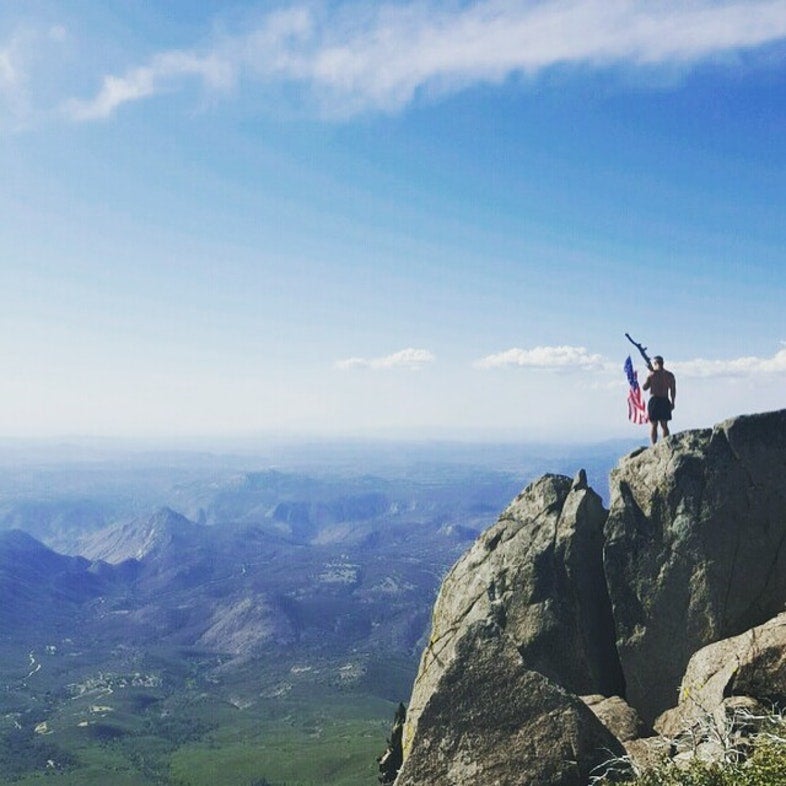
Image from The Dyrt camper Zachary M.
It’s interesting to realize that this park is actually within the Colorado Desert region. With multiple springs and a creek running through the campground, this state park is more of a shaded woodland forest than a dry, sunny desert, but still offers a compelling—and beautiful—perspective on the flip side of California deserts.
There are two main campgrounds within Cuyamaca Rancho State Park. Both campgrounds have picnic tables and a fire ring, flush toilets and pay showers, and campground stores. There are no hookups. There are equestrian campsites as well.
Green Valley
Green Valley is a well-loved campground in Cuyamaca Rancho, perhaps because it is close to favorite hikes and waterfalls that lay within the state park. There are 81 sites to choose from, and it costs campers $31/night to stay at Green Valley.
Calling Green Valley Campground “perfect for weekends,” The Dyrt camper Kim N. loved camping here. “I love this campground for a quick weekend getaway from San Diego that has minimal preparation. Every site is a drive up site, most have shade and there are plenty of bathrooms. Most sites also have a fire ring and picnic table to use as well. A perfect, lower cost campsite that is great for families and people who want an easy camping experience with some water involved!”
Paso Pichacho
Both Green River as well as Paso Pichacho are a reprieve from the heat of California deserts’ harsh, unrelenting sun. While you do run the risk of exposure in either place, there are significantly more forests in the Paso Pichacho area, as well higher elevation and cooler temperatures in the summer than other California deserts.
The Dyrt camper Loren D. enjoyed camping at Paso Picacho for its location, scenery, and area recreational activities. “Great for campers who like to hike. Lots of sites to choose from. Plenty of animal and bird watching. Star gazing is amazing as well. I have camped here in fall, spring and summer. I have never been disappointed.”
There are 85 campsites at Paso Pichacho, with a limit of 30 feet for trailers or RVs. It costs campers $30/night to stay here.
The Best Colorado Desert Hikes
- The Slot. This narrow siltstone canyon hike is a beautiful, short (less than a mile) canyon hike in Anza-Borrego Desert State Park.
- Hellhole Canyon Trail to Maidenhair Falls. A 5.5 mile trail through a canyon that ends at a 20 foot waterfall in the middle of the desert. A favorite hike for those looking to reward themselves with a cool-down, as opposed to mountain views at the top of a peak.
- Cuyamaca Peak. The highest peak in Cuyamaca State Park, this trail is open to hikers and their leashed dogs—the only hike within the park allowing pups. After nearly eight miles of hiking, the reward is pretty spectacular; some of the best views in the Colorado Desert region.
Where To Camp in the Great Basin Desert
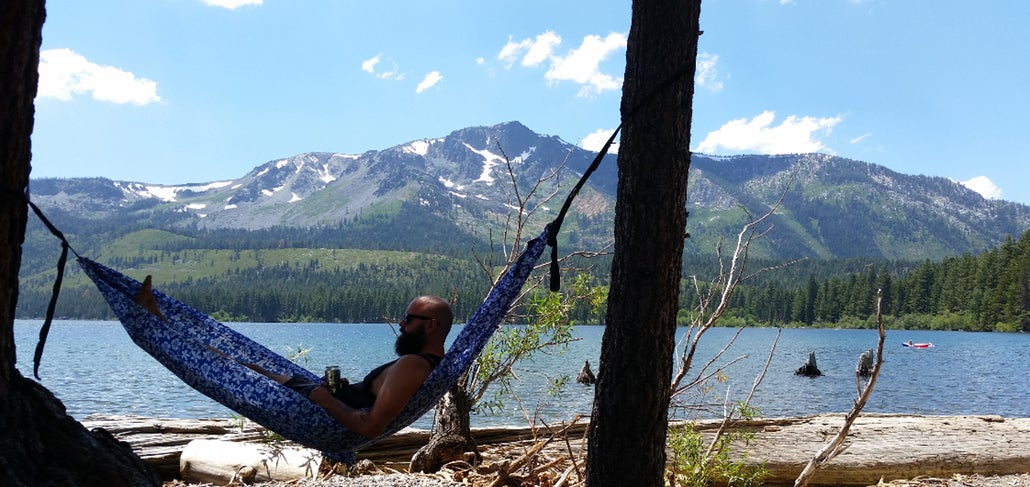
Image from The Dyrt camper Ryan W.
The largest desert in the United States—but the smallest of the California deserts in terms of acreage in the state—the Great Basin desert covers an area of 190,000 square miles and is bordered by two magnificent mountain ranges: the Sierra Nevadas to the west and the Rocky Mountains to the east. The Mojave and the Colorado lie to the south of this arid expanse of land. The Great Basin is primarily in Nevada, but is also in Utah, Idaho, Oregon, and a small portion in eastern California. The climate of The Great Basin has extreme variations based on elevation and season.
When one typically thinks of deserts, it’s with barren, sandy images in mind. It might surprise you then, that Lake Tahoe is a part of The Great Basin desert region.
Camping in California deserts usually means planning for a winter getaway, when the temperatures are more hospitable for the sandy, sunny heat. In this region, however, a summer camping trip is the more popular route. Winter is equally as gorgeous, but come prepared for winter camping, as this region can see a lot of snow.
Mono Lake Tufa State Natural Reserve
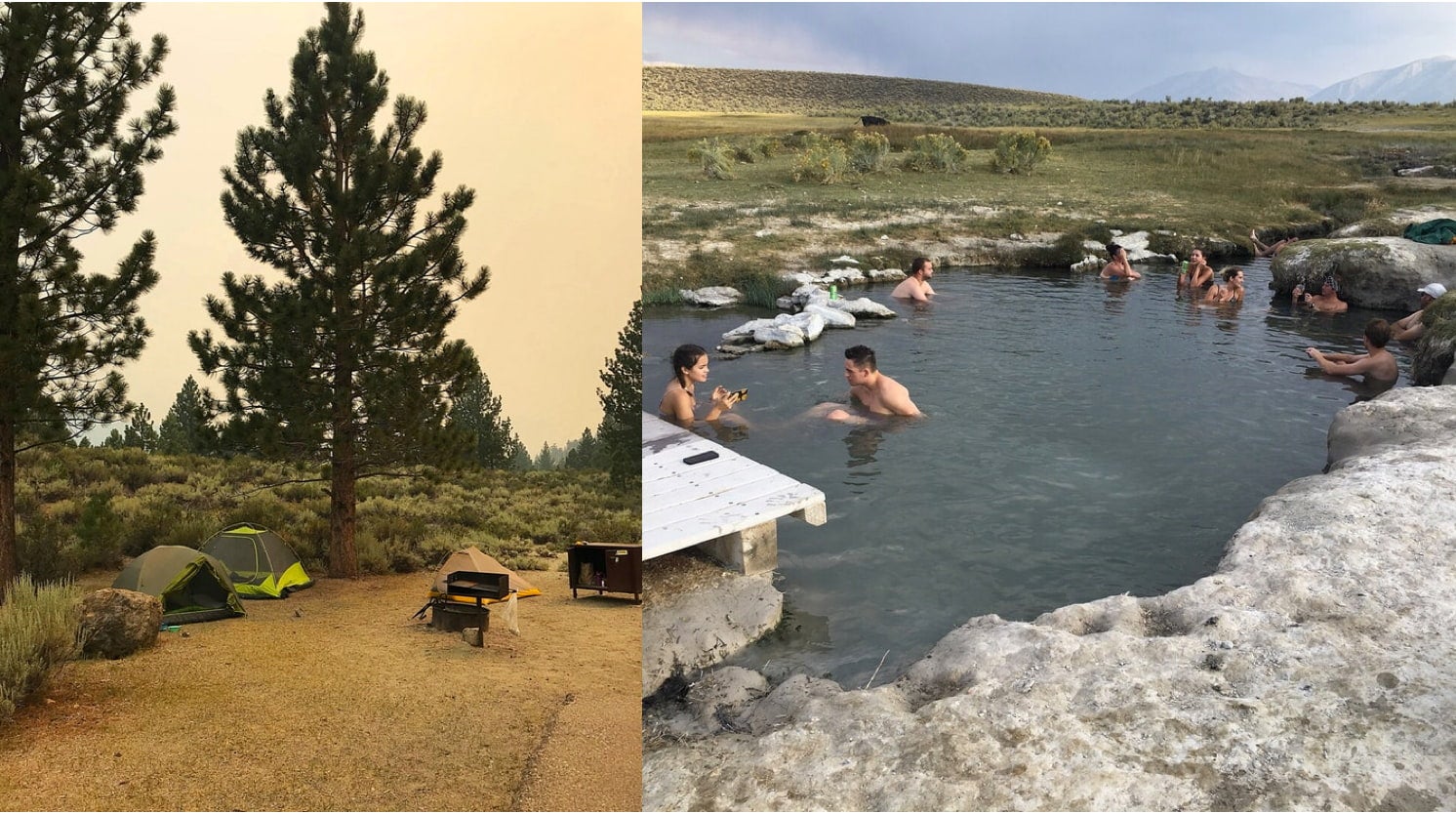
Images from The Dyrt campers Amanda C. and Lucy L.
Currently over one million years old, Mono Lake Tufa State Natural Reserve contains one of the oldest lakes in North America. Known for its calcium-carbonate spires, or tufa towers, Mono Lake is 2.5 times saltier than the ocean and incredibly alkaline.
The high salinity and alkalinity of Mono Lake make this a rare ecosystem for algae, brine shrimp, alkali flies, and more than 80 species of migratory birds. Bird watching is popular here for that very reason, as 1-2 million birds rest and feed on the shores of this ancient lake.
There are no campgrounds within the reserve, but there are a number of first-come, first-serve camping options in close proximity.
Lundy Canyon Campground
Located in an Aspen Grove along Mill Creek, Lundy Canyon Campground is a first-come, first-serve seasonal campground. The campground itself is peaceful, private, and close to area hiking trails. There are restrooms, but there is no potable water, so come prepared. There are 36 quiet sites, with prices that are a budget-friendly; starting at $16/night.
The Dyrt camper Chad F. enjoyed staying at Lundy Canyon for its location—specifically its close access to Mono Lake. “Lundy Canyon is usually closed during the winter months due to snow but tends to open up mid April every year. Located very close to the beautiful Mono Lake which is a must see for anyone.”
June Lake
June Lake Campground is a favorite campsite to many for a number of reasons. Offering the convenience of in-town services—dining and shopping both within walking distance, something rare for camping in California deserts—as well as a myriad of outdoor recreational opportunities, June Lake has hot springs, hikes, and beautiful views of the mountains at every turn.
June Lake is an active bear area, and bear boxes are provided for this reason. It is important to be prepared and follow campground bear safety rules for both the wellbeing of the bears as well as yourself and your fellow campers. There are 28 sites at June Lake, with prices starting at #23/night.
Emerald Bay State Park
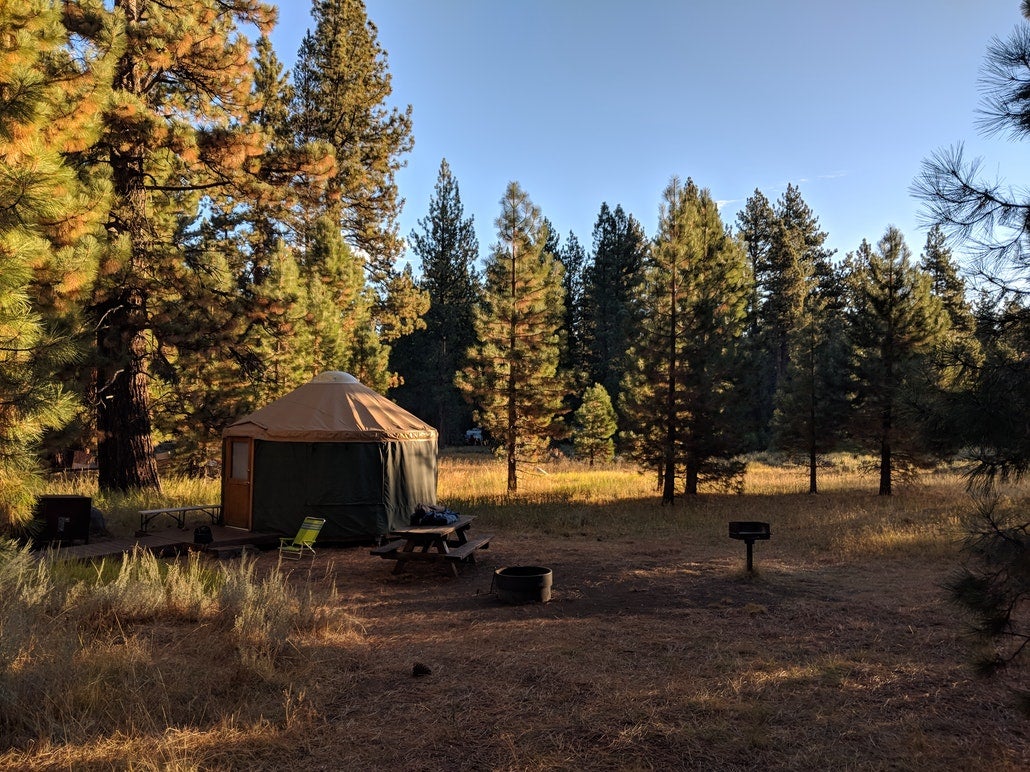
Image from The Dyrt camper Elliot B.
California deserts are mostly known for extreme temperatures, harsh environments, and lonely, vast vistas, so a trip to the alpine Lake Tahoe will feel lush and decidedly not desert-like in comparison.
The blue-green and crystal-clear waters of the lake, as well as the surrounding High Sierras and alpine forests make this an unforgettable park to camp in. There are a number of campgrounds in the area; here are two favorite spots of campers on The Dyrt.
Fallen Leaf Campground
With the south shore of Lake Tahoe a mile away, Fallen Leaf Campground is a popular campground in a stunning spot. There are 206 campsites for both RVers and tent campers. There are also yurts for rent. Fallen Leaf is a popular campground that tends to fill quickly. Reserve early.
The Dyrt camper Colleen C.‘s whole family loved Fallen Leaf so much so, that they plan to stay there exclusively on future trips to Lake Tahoe. “Our family loved this campground so much that we agreed we’re only interested in going back to Lake Tahoe when we can stay here! There are a bunch of cul-de-sacs, so everything is spaced out and it’s great for walking the dogs around. We backed up to a meadow but still had a lot of trees for shade. There were picnic tables, water, good fire rings, bear boxes, and flush toilets.”
Eagle Point Campground
The Dyrt camper DJ P. loved Eagle Point Campground for its “great views and quiet evenings,” saying, “Our only complaint was the bathrooms were a little dirty, but other than that, the camp ground was great. We paid for a larger site but only had two of us and it made for a ton of space between us and the people around. Woke up to the sun bouncing off the lake. Great place to stay.”
Eagle Point is a favored basecamp among those who want to experience all of the lake activities that Lake Tahoe offers—both kayaking and swimming are exceptional here. Eagle Point has 100 sites, with prices that start at $35/night. There are bathrooms with free showers and flush toilets.
Best Hikes of The Great Basin
- Mono Lake South Tufa Trail. With sweeping views of the high Sierras in the distance, the South Tufa Trail is an easy trail that brings hikers alongside the iconic tufa of Mono Lake.
- Tahoe Rim Trail. Okay, this is not a one-day trail. It’s not even a weekend trail. The Tahoe Rim Trail is a 165 mile trail that loops from peak to peak around the entirety of Lake Tahoe. If you don’t have the two weeks it typically takes to complete this trail, consider breaking it into day-hike sections. The trail is unbelievably beautiful no matter how you tackle it.
- Freel Peak Trail. The highest peak in the Lake Tahoe area, at 10,886 feet, Freel Peak is a heavily-trafficked, difficult hike with outstanding views of Lake Tahoe, High Meadow, the Crystal Range and Desolation Wilderness.
Related Articles:
- Anza Borrego State Park
Related Campgrounds:
- Alabama Hills Camping, Bishop, CA
- Southfork Campground, Tulare County, CA
- Indian Cove Campground Joshua Tree National Park, CA
- Borrego Palm Canyon Campground, San Diego County, CA
- Lake Piru Camping, Piru, CA
- Carlsbad State Beach Camping, Carlsbad, CA
- Lone Pine Camping near Mt. Whitney, CA
Popular Articles:
Articles on The Dyrt Magazine may contain links to affiliate websites. The Dyrt receives an affiliate commission for any purchases made by using such links at no additional cost to you the consumer.

